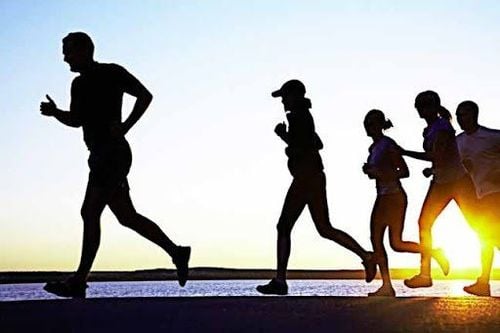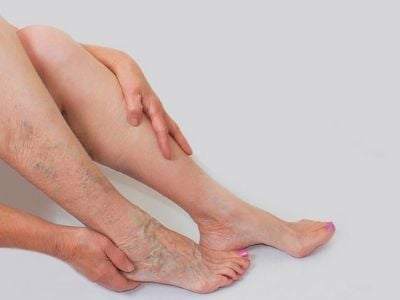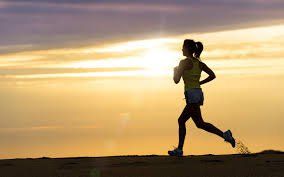This is an automatically translated article.
Running short distances of 100 - 400m is one of the most popular forms of running. Trainers need to master short distance running techniques to run and compete according to the rules, achieving the best results.
1. Prepare the pedal for short distance running
How many stages does the short run technique have? This technique consists of 4 stages: Starting, rushing, running in the middle and finishing. Each stage in short-distance running needs its own caveats. Specifically:
2. Details of short distance running technique
Pedals are an essential tool in short-distance running. Arrange the pedal to run short to suit the characteristics and level of the practitioner. The following pedal arrangements are generally available:
Universal way: The front pedal is placed 1 - 1.5 foot lengths behind the starting line. The rear pedal is placed a distance from the front pedal equal to the length of the shins (nearly 2 runner's feet); Distance: 2 pedals are placed further away from the starting line. Specifically, the front pedal is located about 2 feet behind the starting line, the rear pedal is 1 foot or closer to the front pedal. This is a pedal layout suitable for tall people, with average leg and arm strength; Close distance: 2 pedals are positioned closer to the starting line. The front pedal is about 1 foot or closer from the starting line, the rear pedal is 1 - 1.5 feet from the front pedal. This way takes advantage of the power of both legs when starting, helps runners start quickly and is often suitable for short people with strong limbs.

Trắc nghiệm: Bận rộn có ảnh hưởng đến sức khỏe của bạn không?
Cuộc sống hiện đại khiến chúng ta vì quá bận rộn mà quên chăm sóc sức khỏe cho chính mình. Ai cũng biết rằng lịch trình làm việc cả ngày có thể khiến bạn kiệt sức, nhưng cụ thể bận rộn ảnh hưởng thế nào tới sức khỏe? Hãy cùng làm thử bài trắc nghiệm dưới đây.
2.1 Departure
In short distance running, you should use a low starting technique with the pedal to maximize the effect of the back pedal force, helping the body to start faster. There are 3 commands used in the short run: Get in, get ready and run. The technique to be performed after each command is as follows:
After the entry command: The runner stands in front of the pedals, sits down and puts his hands in front of the starting line, puts his dominant foot on the front pedal, the other foot on the back pedal, toes touch the running track. You should try to bounce 2 feet on the pedal to check if the pedal is stable and correct it in time. Then, the runner lowers his back knee to the track, retracts his hands behind the starting line, resting on his fingers, the distance between his hands is shoulder-width apart. At the end, the body is in a kneeling position on the back of the knee, the back is naturally straight, the head is straight and the eyes are looking forward, 40 - 50cm from the starting line. The body's center of gravity should be on the hands, front feet and hind legs; After the ready command: The runner gradually shifts his weight forward, slowly lifts his butt to the level or higher than his shoulders, his shoulders protrude 5-10cm ahead of the starting line, his eyes look forward 40 from the starting line. - 50cm. There are 4 points on the body against the running track, which are 2 hands and 2 feet, keep that position to be ready to start; After running command: Runner kicks 2 legs hard, pushes 2 hands off the running track, hits hands in the opposite direction to legs (keeps balance and supports back pedal force of 2 legs). The back leg does not pedal all the way, quickly bringing it forward to complete the first step. The front foot pedals to straighten the joints, leave the pedals, immediately bring forward to complete the 2nd run.
2.2 Rushing
The time to start running is when both hands leave the road. When running, runners need to increase their running speed. In the first steps, the foot placed on the running track is slightly separated, then gradually decreases until the end of the dash, then gradually becomes a straight line. The dash speed is increased by increasing the stride length. The next step should be about 1⁄2 feet longer than the front step, after 9-11 steps, it should be stable.2.3 Mid-distance running
After javelin, run in the middle. At this stage, the runner needs to maintain the high speed achieved in the dash. The running technique of this stage is quite stable with some of the following characteristics:
Land with the front half of the foot. Next, the front kickstand changes to the vertical stand and then the rear pedal. Simultaneously with the back pedal movement, which is the movement of bringing the foot forward, the thigh of the foot should be raised parallel to the ground. Because running speed mainly depends on the efficiency of the rear pedal, this movement needs to be done actively, quickly, strongly and in the right direction; As soon as the front leg touches the ground, the shoulders and hips should actively move forward. Shoulder-to-hip movement should be staggered as that of arms and legs, upper body leaning forward about 50°; When hitting hands, the two hands are bent at the elbows, staggered and consistent with the running rhythm of the two legs. 2 shoulders need to relax, hit forward and slightly closed in, hit back slightly open to keep balance for the body. 2 hands that can partially grasp or extend the fingers; When running for the whole distance, it is necessary to breathe normally and actively, without disturbing the running technique and rhythm.

2.4 Reaching the finish line
When about 15-20m from the finish line, runners need to focus all their energy to be able to maintain the highest speed. You should try to increase the forward leaning for better rear pedaling effect. A runner is considered to have completed a short distance run when one part of the upper body (except the head and arms) touches the finish line or the line rises from the finish line.
Therefore, on the final step, the runner needs to actively bend his upper body forward to touch the chest to the goal line - how to hit the finish with the chest. You can also combine forward flexion and shoulder rotation with one shoulder touching the target - shoulder hitting. Pay attention not to jump to the finish line because when the body jumps up, the speed will slow down. After reaching the finish line, you need to run a few more steps according to inertia, keep your balance so that you do not fall, do not stop suddenly and do not collide with others.
3. Note when running short distances
To run a safe and effective short distance, you need to pay attention to the following:
Choose the right running outfit. Specifically, you should prioritize sportswear that is elastic and absorbs sweat well. If you run in cold weather, you should keep your body warm but still make sure your clothes are easy to sweat. Running shoes need to be soft and fit, with high friction and elasticity to reduce pressure on the feet when running; About 30 minutes before a short distance running session, you should have a light meal. Besides, you need to replenish water for the body to avoid dehydration. Following the correct short distance running technique as above will help you achieve good results and avoid the risk of sports injuries.
Please dial HOTLINE for more information or register for an appointment HERE. Download MyVinmec app to make appointments faster and to manage your bookings easily.













